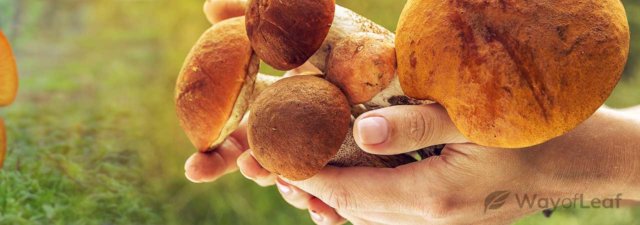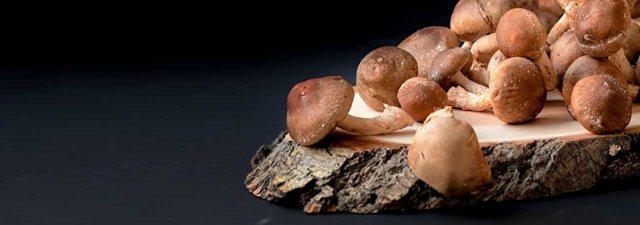Trametes versicolor mushrooms, commonly known as turkey tails, are among the most recognizable and best-studied functional fungi.
Key Points
- Turkey tail mushrooms have a range of potential health benefits
- They are one of the easiest mushrooms to find and identify in the wild
- There are a few turkey tail look-alikes, but none are dangerous
- The laws on foraging for wild mushrooms vary from place to place
They have a broad range of potential benefits due to their unique active components. They are also one of the easiest mushrooms to find growing in the wild and are relatively straightforward to identify.

Therefore, turkey tails are an excellent choice for anyone new to mushroom foraging, although there are still a few precautions. Here’s what you need to know before going turkey tail hunting for the first time.
Turkey Tail Benefits
Turkey tails are classified as “functional fungi,” meaning they have many potential health benefits.
Like many mushrooms in this category, people primarily take turkey tails for immune support.
Indeed, research has shown that these mushrooms could enhance both innate and adaptive immunity. This means that they could improve the body’s natural defenses and how it copes with specific pathogens.
The mushrooms contain two unique active ingredients: polysaccharides known as PSP and PSK. These compounds may have anti-cancer properties, and PSK is widely used alongside chemotherapy and radiation therapy in Japan.
In recent years, turkey tails have become famous for their therapeutic potential. Therefore, more and more people are adding these mushrooms to their daily supplement routine.
The good news is that you might not need to splash out on commercial products since turkey tails are relatively common in the wild. Once you know what to look for and where to look, you’ll likely see them just about everywhere!
Where to Find Wild Turkey Tails
Turkey tails love to grow on rotten wood. Therefore, you will usually find them on old logs or tree stumps. However, you might also find them on living trees if one of the branches has died.
They are among the most widespread fungi and grow in various climates worldwide. They are also one of the few species that are in season year-round, making them a favorite among foragers.
Look out for turkey tails anywhere with trees and logs, including woodland, parks, and gardens. However, you should not harvest the mushrooms from areas where chemicals may have been sprayed.
Turkey Tail Identification
Turkey tails are quite distinctive. They are bracket fungi and often grow in large clusters, forming overlapping shelves. The Japanese name for turkey tails is kawaratake, meaning “roof tile fungus,” which describes their growing habit perfectly.
The mushrooms have fan-shaped caps with concentric brown and gray rings, like a turkey’s tail. However, the color of the mushrooms can vary considerably. They can range from pale tan to blackish-brown, and some even have a bluish or greenish hue. However, the caps always have a white margin, which is one way to differentiate them from their common look-alikes (see below).

The caps’ size can also vary, but they tend to be around 1.5 to 4 inches (4 to 10 cm) by 1 to 2 inches (3 to 5 cm). They have a velvety texture when young and become smoother as they age. The flesh is leathery and tends to bend rather than break unless the mushrooms are dehydrated.
The underside of the mushrooms is covered with pores that look like tiny holes on the surface. They are white in younger specimens and turn yellow and then brown with age. It is best to harvest the mushrooms when they are still fresh and white underneath.

Turkey Tail Look-Alikes
Turkey tails have a few look-alikes, but the good news is that none of them are poisonous. Therefore, they are a reasonably safe bet for beginner foragers.
Several other Trametes species look similar to turkey tails and are difficult to distinguish without laboratory testing. However, perhaps the most common turkey tail look-alikes are Stereum species, such as S. ostrea and S. hirsutum. In fact, these mushrooms are sometimes known as false turkey tails.
These fungi grow in clusters like true turkey tails, are similarly shaped, and can also have concentric rings of color. However, they have a smooth underside rather than pores and do not have white cap margins like true turkey tails (see below).

Stereum hirsutum, or false turkey tail. Note the smooth underside and lack of white cap margins.
How to Forage for Turkey Tails: Laws, Safety, and More
Although foraging for turkey tails is safe in as much as there are no poisonous look-alikes, it is still necessary to exercise caution.
Avoid picking mushrooms from areas where chemical pesticides or weedkillers may have been sprayed. This includes public parks, roadsides, and farmland. Furthermore, it is inadvisable to harvest mushrooms growing close to the ground as they could have been “sprayed” by dogs or other wildlife.
It is also essential to understand the laws on foraging in your area, and these can vary significantly.
For example, some national parks allow individuals to collect a limited number of mushrooms for personal use without a permit. However, others require a permit for any mushroom hunting, no matter how small-scale. Moreover, foraging is prohibited in some areas, so check before going.
Only forage on private land if you have the landowner’s explicit permission. It might be wise to receive this in writing to avoid any legal issues further down the line.
Finally, harvest mushrooms respectfully and only ever take what you need. Mushrooms play a fundamental role in the ecosystem, and some should be left behind to reproduce and continue their life cycle.
Use a knife or scissors to carefully separate mushrooms from the host wood and try not to damage the parts beneath the bark. Transport your mushrooms in a wicker basket or mesh bag so that the spores can escape and generate more turkey tails for many years to come.
Turkey tails are a great beginner’s mushroom as they are easy to find and identify with no poisonous look-alikes. They are also packed with health benefits making them hugely popular with foragers.
When searching for this mushroom, follow the guidelines above to stay safe and avoid breaking the law. We recommend taking a tour with an experienced forager who can explain the nuances of your region before heading out alone.









![Are Mushrooms Good for You? [Exploring the Facts]](https://wayofleaf.com/wp-content/uploads/2021/06/wol-banner-are-mushrooms-good-for-you-640x225.jpg)


